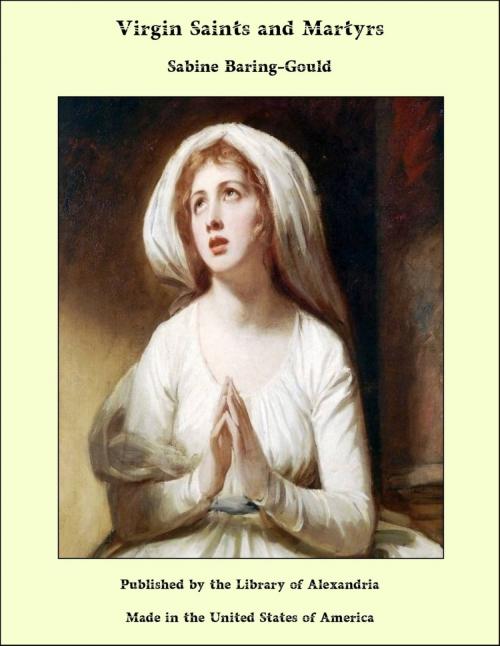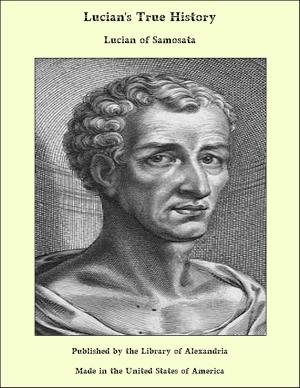Virgin Saints and Martyrs
Nonfiction, Religion & Spirituality, New Age, History, Fiction & Literature| Author: | Sabine Baring-Gould | ISBN: | 9781465613554 |
| Publisher: | Library of Alexandria | Publication: | March 8, 2015 |
| Imprint: | Language: | English |
| Author: | Sabine Baring-Gould |
| ISBN: | 9781465613554 |
| Publisher: | Library of Alexandria |
| Publication: | March 8, 2015 |
| Imprint: | |
| Language: | English |
In the second century Lyons was the Rome of Gaul as it is now the second Paris of France. It was crowded with temples and public monuments. It was moreover the Athens of the West, a resort of scholars. Seated at the confluence of two great rivers, the Rhône and the Sâone, it was a centre of trade. It is a stately city now. It was more so in the second century when it did not bristle with the chimneys of factories pouring forth their volumes of black smoke, which the atmosphere, moist from the mountains, carries down so as to envelop everything in soot. In the great palace, now represented by the hospital, the imbecile Claudius and the madman Caligula were born. To the east andsouth far away stand Mont Blanc and the snowy range on the Dauphiné Alps. Lyons is a city that has at all times summed in it the finest as well as the worst characteristic of the Gallic people. The rabble of Lyons were ferocious in 177, and ferocious again in 1793; but at each epoch, during the Pagan terror and the Democratic terror, it produced heroes of faith and endurance. The Emperor Marcus Aurelius was a philosopher full of good intentions, and a sentimental lover of virtue. But he fondly conceived that virtue could only be found in philosophy, and that Christianity, which was a doctrine and not a speculation, must be wrong; and as its chief adherents belonged to the slave and needy classes, that therefore it was beneath his dignity to inquire into it. He was a stickler for the keeping up of old Roman institutions, and the maintenance of such rites as were sanctioned by antiquity; and because the Christians refused to give homage to the gods and to swear by the genius of the emperor, he ordered that they should be persecuted to the death. He had been a pretty, curly-haired boy, and a good-looking young man. He had kept himself respectable, and looked on himself with smug self-satisfaction accordingly. Had he stooped to inquire what were the tenets, and what the lives, of those whom he condemned to death, he would have shrunk with horror from the guilt of proclaiming a general persecution. In Lyons, as elsewhere, when his edict arrived the magistrates were bound to seek out and sentence such as believed in Christ. A touching letter exists, addressed by the Church of Lyons to those of Asia and Phrygia giving an account of what it suffered; and as the historian Eusebius embodied it in his history, it happily has been preserved from the fingering, and rewriting, and heightening with impossible marvels which fell to the lot of so many of the Acts of the Martyrs, when the public taste no longer relished the simple food of the unadorned narratives that were extant.
In the second century Lyons was the Rome of Gaul as it is now the second Paris of France. It was crowded with temples and public monuments. It was moreover the Athens of the West, a resort of scholars. Seated at the confluence of two great rivers, the Rhône and the Sâone, it was a centre of trade. It is a stately city now. It was more so in the second century when it did not bristle with the chimneys of factories pouring forth their volumes of black smoke, which the atmosphere, moist from the mountains, carries down so as to envelop everything in soot. In the great palace, now represented by the hospital, the imbecile Claudius and the madman Caligula were born. To the east andsouth far away stand Mont Blanc and the snowy range on the Dauphiné Alps. Lyons is a city that has at all times summed in it the finest as well as the worst characteristic of the Gallic people. The rabble of Lyons were ferocious in 177, and ferocious again in 1793; but at each epoch, during the Pagan terror and the Democratic terror, it produced heroes of faith and endurance. The Emperor Marcus Aurelius was a philosopher full of good intentions, and a sentimental lover of virtue. But he fondly conceived that virtue could only be found in philosophy, and that Christianity, which was a doctrine and not a speculation, must be wrong; and as its chief adherents belonged to the slave and needy classes, that therefore it was beneath his dignity to inquire into it. He was a stickler for the keeping up of old Roman institutions, and the maintenance of such rites as were sanctioned by antiquity; and because the Christians refused to give homage to the gods and to swear by the genius of the emperor, he ordered that they should be persecuted to the death. He had been a pretty, curly-haired boy, and a good-looking young man. He had kept himself respectable, and looked on himself with smug self-satisfaction accordingly. Had he stooped to inquire what were the tenets, and what the lives, of those whom he condemned to death, he would have shrunk with horror from the guilt of proclaiming a general persecution. In Lyons, as elsewhere, when his edict arrived the magistrates were bound to seek out and sentence such as believed in Christ. A touching letter exists, addressed by the Church of Lyons to those of Asia and Phrygia giving an account of what it suffered; and as the historian Eusebius embodied it in his history, it happily has been preserved from the fingering, and rewriting, and heightening with impossible marvels which fell to the lot of so many of the Acts of the Martyrs, when the public taste no longer relished the simple food of the unadorned narratives that were extant.















